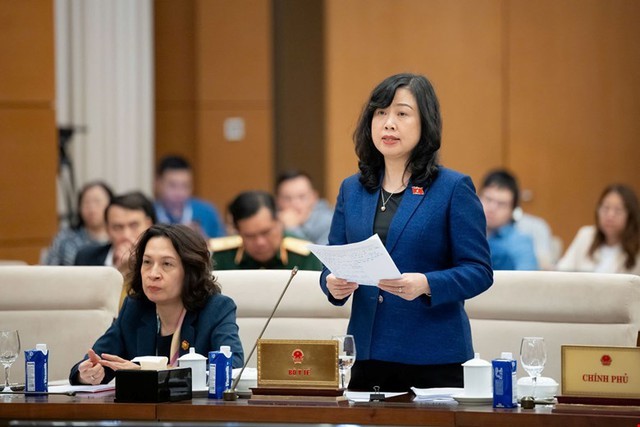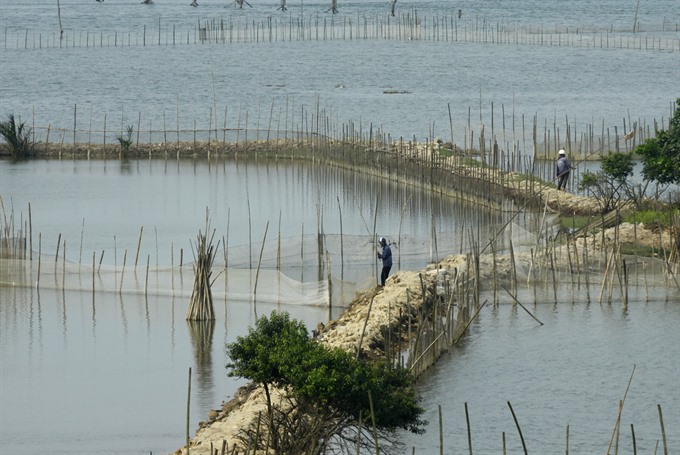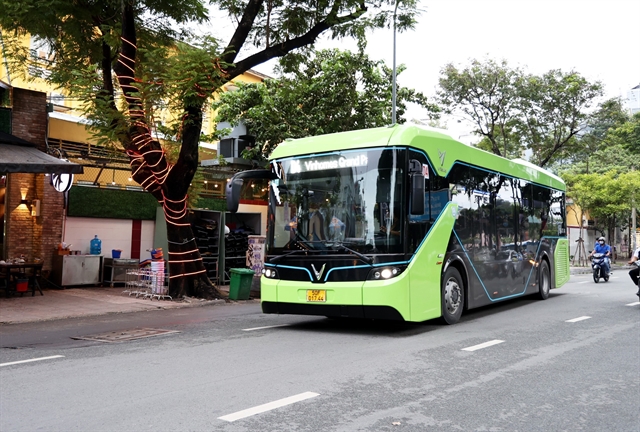 Society
Society

Shrimp farming on sandy land has brought profits to the coastal central provinces over the years. But the unplanned and spontaneous expansion of this model is accompanied by the potential of severe negative impacts on economy and environment.
 |
| Shrimp aquaculture in Phú An Commune, Phú Vang District, Huế City. Shrimp farming has brought profits to the coastal central provinces over the years. — VNA/VNS Photo Hồ Cầu |
HÀ NỘI — Shrimp farming on sandy land has brought profits to the coastal central provinces over the years. But the unplanned and spontaneous expansion of this model is accompanied by the potential of severe negative impacts on economy and environment.
Shrimp aquaculture on sandy land started in 2000 in some localities at a small scale.
Thanks to favourable conditions of land and sea water, aquaculture in coastal provinces has increased sharply in recent years both in terms of area and output.
According to the statistics by the Directorate of Fisheries, the area of shrimp farming on sandy land has reached more than 3,000ha across 14 central provinces, generating some 41,700 tonnes per crop.
The productivity also increased up to six times with an average of 13-15 tonnes per ha compared to 2-3 tonnes per ha in 2000-02.
The yield even is higher in high-tech intensive farming areas with 70-100 tonnes per ha.
The successful application of advanced science and technology for production has driven shrimp farming in the central region to further develop and attract farmers eager to earn money.
Many localities such as Nghệ An, Hà Tĩnh and Thừa Thiên Huế have taken the initiative in the technology of breeding and raising shrimps to meet the production demand, Công Luận (Public Opinion) newspaper reported.
Waste and unproductive land is utilised in an efficient way. This model also creates jobs and contributes to improving local livelihoods and reducing poverty.
The average profit is about VNĐ500 million (US$21,700) per ha per crop, even VNĐ700-900 million per ha.
According to the Department of Agriculture and Rural Development in Hà Tĩnh Province, the shrimp farming on sandy land has been a definite edge in the restructuring of agriculture and rural areas.
In 2011, the province had 40ha of shrimp farming on sand and it reached to 69ha in 2014. Productivity continued to increase and reached 12 to 20 tonnes per ha per crop with the average revenue of VNĐ1.9 billion per ha.
However, after years of development, the “booming” of the shrimp culture exposed the inadequacies that need to be resolved, the newspaper reported.
Until now, wastewater from the farming ponds has been discharged directly into the surrounding environment without being treated or filtered.
High pollution risks therefore threaten adjacent land areas and water sources, leading to an increased risk of shrimp diseases.
Cultivating in untreated water has exposed diseases from one crop to another, causing higher risks for farmers. Even shrimp died in mass and put the farmers in debt.
Another warning sign given to this farming model is the negative impacts to the environment.
The cultivation of shrimp on sandy land involves the use of fresh and groundwater, which in the coastal areas are limited in supply.
A report shows a concentrated shrimp farm with 100ha needs about five million cu.m of water per year.
Over exploitation of underground water to serve shrimp farming would cause depletion of water resources, directly affecting people’s lives and agricultural production, experts warns.
In addition to discharge of wastewater into the sea, many households now directly discharge wastewater, sludge farming on the sandy land near the ponds, causing pollution and salinisation of ground water.
Solutions for sustainable development
Lê Đình Sơn, secretary of Hà Tĩnh Province’s Party Committee, said that to achieve sustainable development, the Government has specific plans for each region and inter-region and will create conditions for localities to build up infrastructure for cultivation.
The agricultural sector has recommended households and businesses well-manage farming areas and apply advanced farming process.
According to Trương Hữu Thông, director of Thông Thuận Ltd Co from Bình Thuận Province, shrimp farming on sand is growing fast, it would lead to “bubble” development without direction from relevant agencies, causing over supply.
The Directorate of Fisheries plans to only raise shrimp in areas with sufficient surface water to reduce the use of ground water, which is limited in central Việt Nam.
It will also take into account effects of climate change and apply advanced technology to save fresh water. The agency will encourage private sector investment to develop self-contained shrimp ecosystems.
The directorate will formulate a master plan to facilitate shrimp growing as part of the national action plan to develop the industry by 2025 and develop infrastructure for areas of large-scale shrimp production.
Việt Nam aims to expand the industry to 7,000ha by 2025, produce some 110,000 tonnes per crop, and ensure 70 per cent of these areas have infrastructure developed, according to the directorate. — VNS




